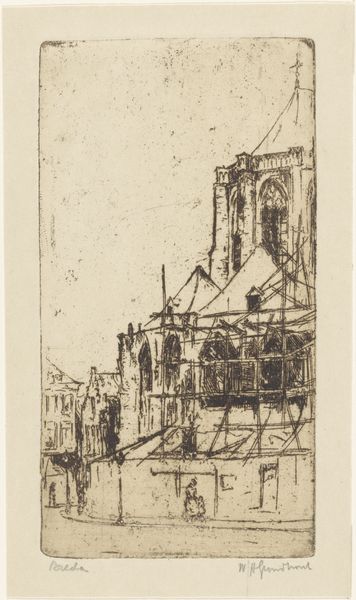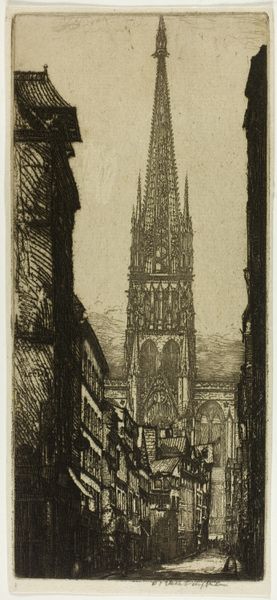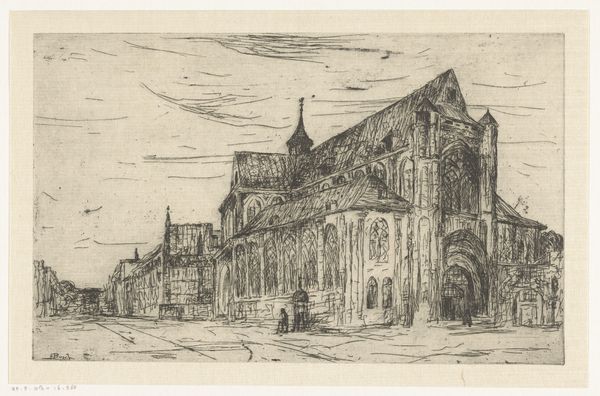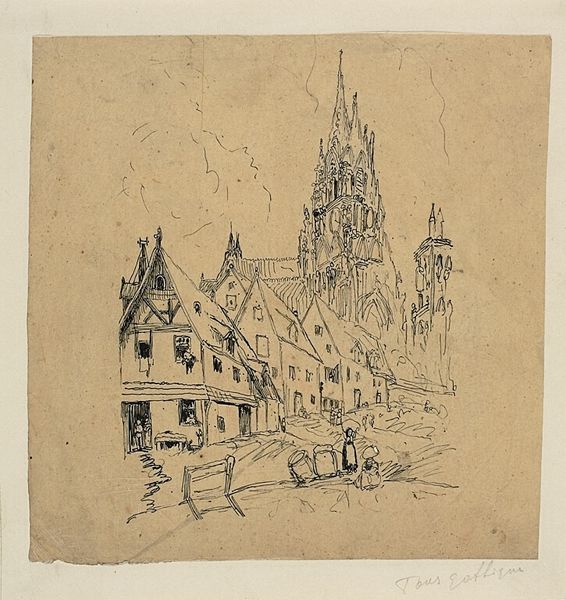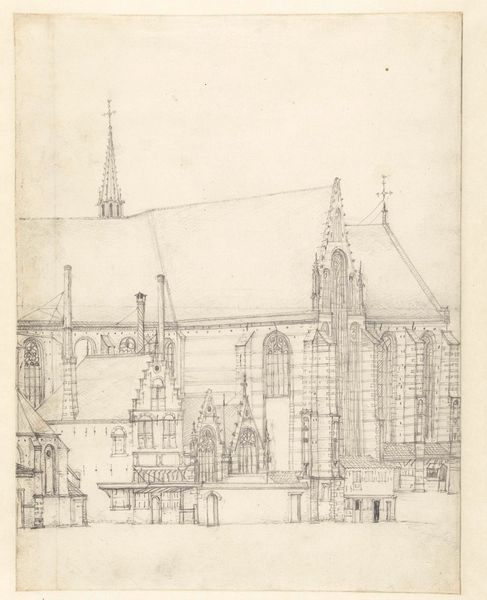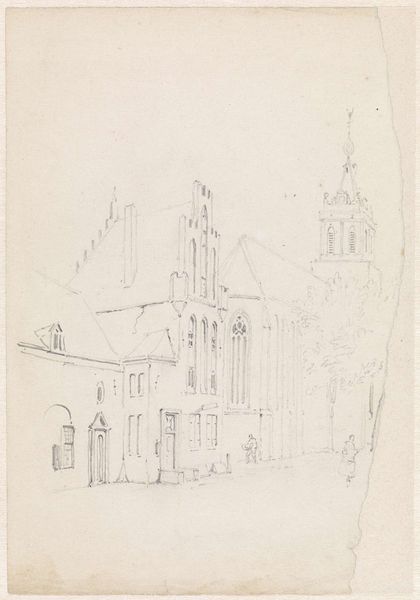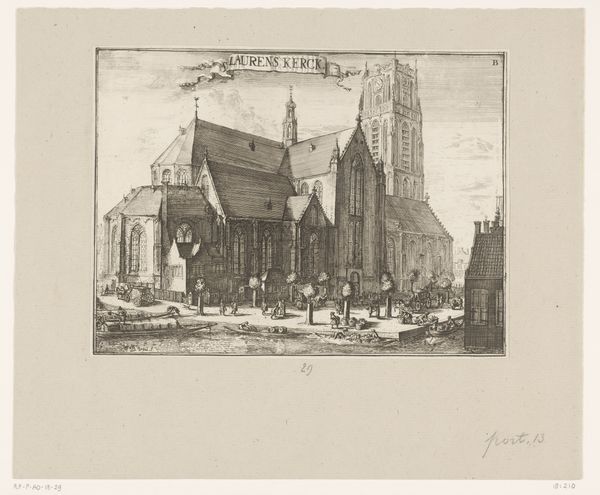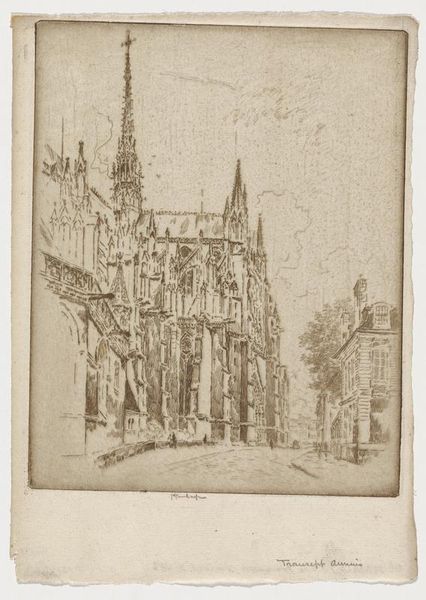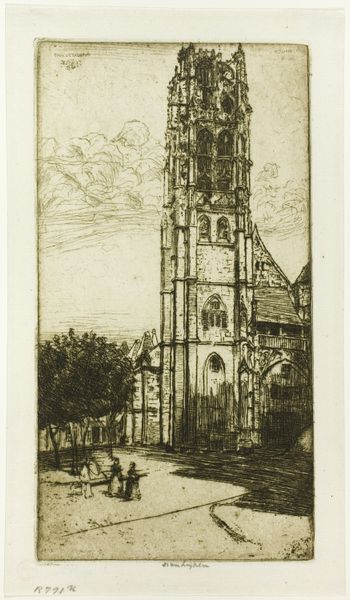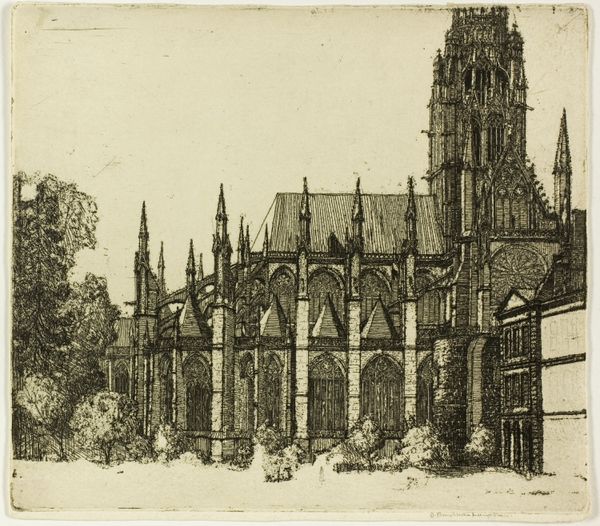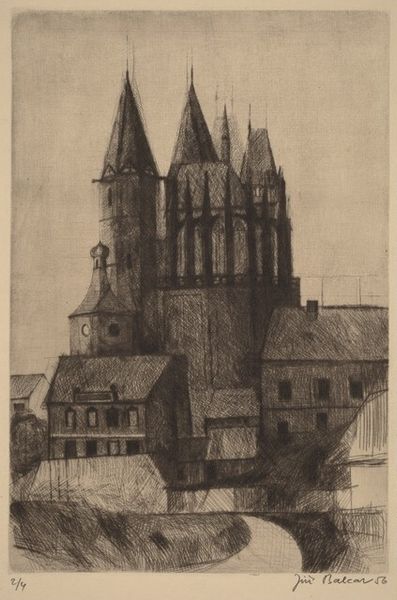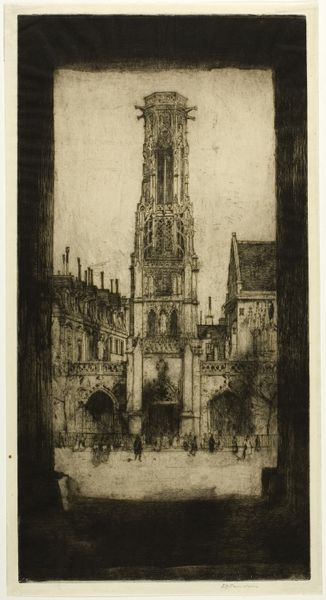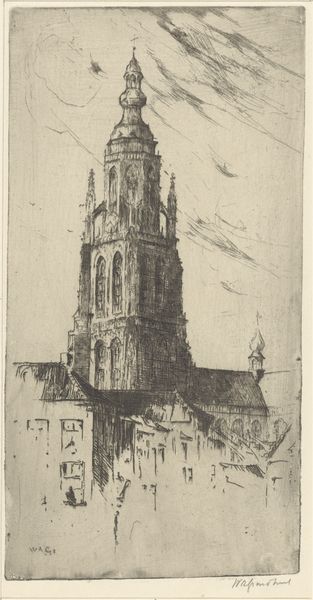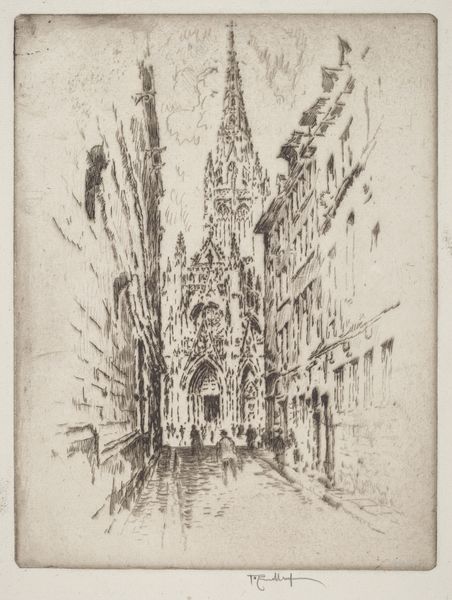
Dimensions: image: 15.1 x 24.6 cm (5 15/16 x 9 11/16 in.) sheet: 30.2 x 40.8 cm (11 7/8 x 16 1/16 in.)
Copyright: National Gallery of Art: CC0 1.0
Curator: Let's turn our attention to Jiři Balcar's etching and ink drawing, "Saint Ludmila," created in 1956. Editor: My initial impression is a kind of chaotic beauty. There's a sense of tension between the precision of the architectural forms and the almost frantic energy of the linework in the foliage. Curator: Indeed. Balcar masterfully utilizes line to create depth and texture. Observe how the density and direction of the lines vary to suggest shadow and light, thereby articulating the forms of the cathedral and surrounding structures. The cathedral’s towers provide a distinct compositional verticality. Editor: It's hard to ignore the date though, 1956. Czechoslovakia was firmly under Soviet control at that point. The sketch’s seemingly agitated style feels like a visual expression of the internal turmoil many felt during the oppressive political climate of the time. A sort of visual scream. Curator: While I appreciate that interpretation, grounding artistic choices solely in the political climate seems reductive. We should consider the artistic trends of the time, expressionism and its interest in subjective perspectives. Balcar perhaps sought to express his internal state but through a visual language which speaks more profoundly of the modernist preoccupation with the fragmented self. Editor: Perhaps, but surely both could be true. Also, "Saint Ludmila" feels like it holds layers. Ludmila was the Bohemian Duchess and the Grandmother of Wenceslaus. A woman and Saint that met a martyr's death. Was it Balcar´s intention to establish the historical significance of the building with the title, even if subtly? Curator: I see your point. The choice of subject matter is undeniably deliberate, potentially acting as a coded reference to cultural identity amid Soviet cultural domination. And that interplay elevates the piece beyond mere formalism. Editor: Exactly. It is interesting to view Balcar´s piece through both a formal and social-political lens and consider how art operates as both commentary and visual expression during periods of political upheaval. Curator: Agreed. Looking closer at its formal composition provides the chance for larger political reflections to exist within the landscape, prompting a layered view of this city scene. Editor: For me, this has illuminated how the art style and social commentary cannot and should not be decoupled from art produced during this period. It adds deeper context to Saint Ludmila.
Comments
No comments
Be the first to comment and join the conversation on the ultimate creative platform.
